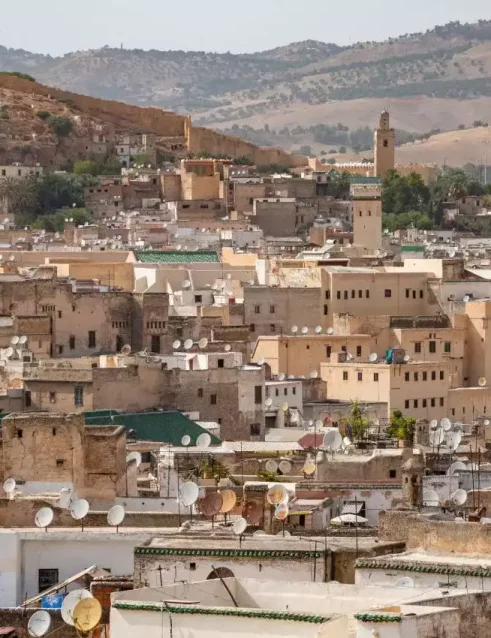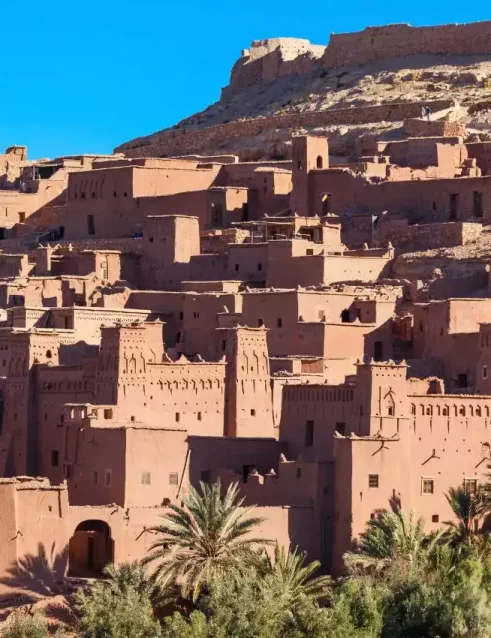Moroccan Pottery
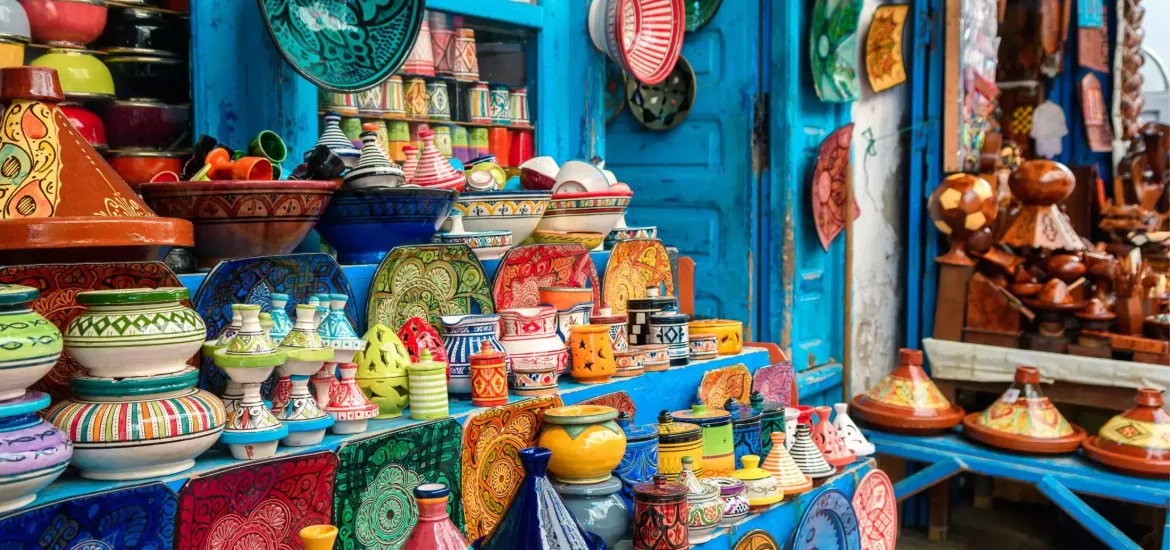
History and Art of the Moroccan Pottery
Moroccan pottery, distinguished by its rich colors and intricate designs, is an art form steeped in tradition and history. With roots that trace back to ancient times, this craft has been shaped by diverse cultural and historical influences, including Morocco’s geographical position at the crossroads of Africa, Europe, and the Middle East. The practice is renowned for its unique combination of beauty and utility, serving both as a functional item in daily life and as a work of art.
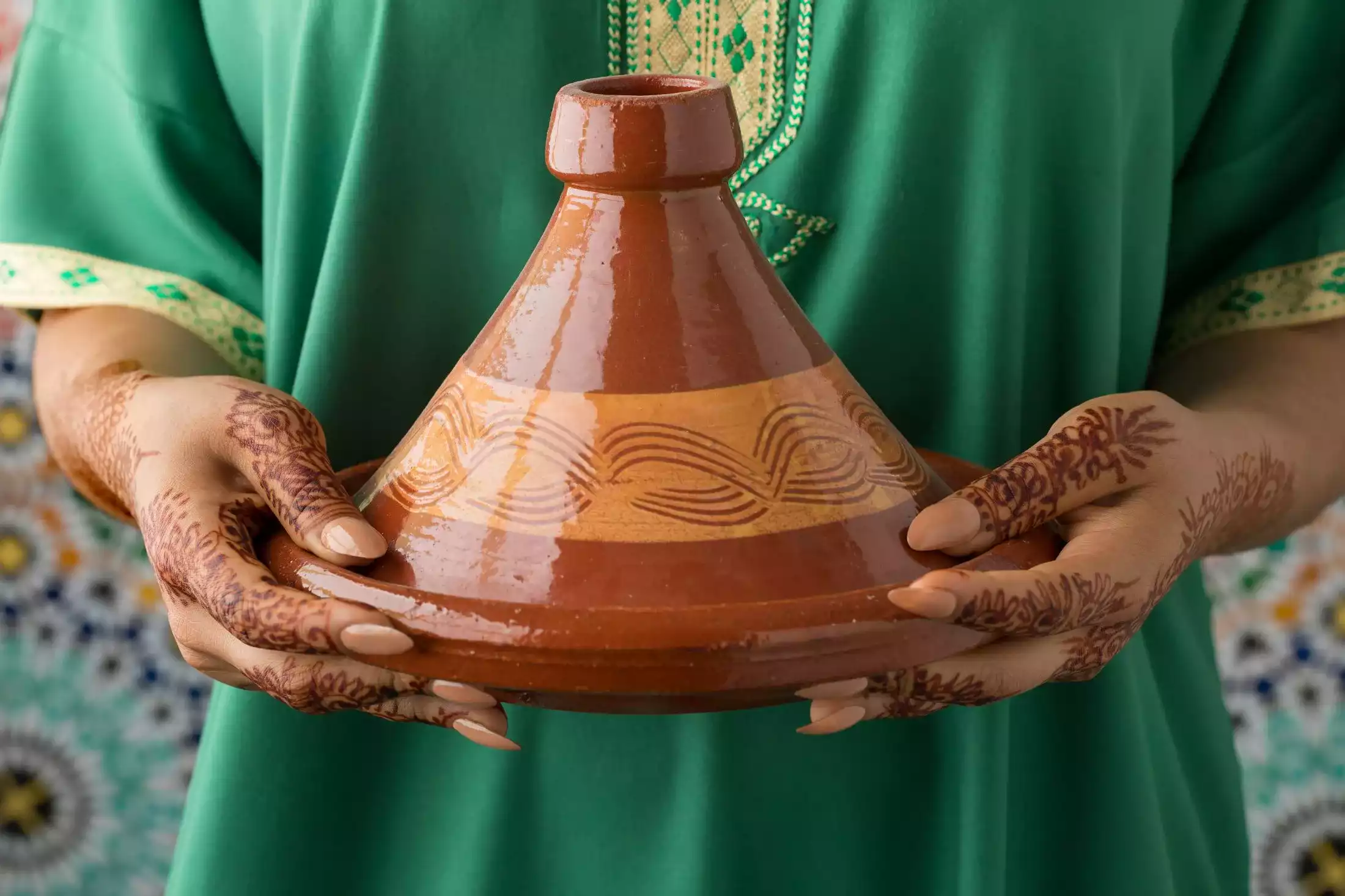
History of Moroccan Pottery
The rich tapestry of Moroccan pottery is shaped by its deep-rooted history and the multitude of cultural influences it has absorbed over the centuries. Antique Moroccan pottery dates to ancient times when the indigenous Berber populations crafted utilitarian objects for daily use. These pieces often bore simple, yet distinct geometric designs and were primarily made from locally sourced clay. Notable for their rugged simplicity and durability, these early creations set the foundation for Morocco’s pottery traditions, a reflection seen today in the antique pieces collected for their historical significance.
With the advent of Islamic rule, Moroccan ceramics underwent significant transformation. Glazing techniques and ornate patterns were introduced, and potters began to produce finer, more decorative items. The artistry blossomed with intricate motifs inspired by Islamic calligraphy and geometry, as seen in tiles and dishware from that period.
Moving into the contemporary era, Moroccan pottery has maintained its heritage while integrating modern aesthetics. New designs, colors, and functions reflect the evolving tastes and needs of the times, and the pottery industry has seen a revival with the growth of both local and international markets. However, traditional methods are still venerated and practiced, preserving the legacy of Moroccan craftsmanship through pieces like tagines and zellige tiles – a testament to the enduring relevance of this ancient art form.
Materials and Style
Clay and Minerals
Moroccan pottery is renowned for its high-quality materials and traditional composition techniques. The authenticity of this craft stems from the unique blend of locally sourced diverse clay types used, each with distinctive properties. For example, the areas of Fez and Safi are known for their rich clay deposits, which include a mix of illite, smectite, and kaolinite. These minerals contribute to the plasticity, color, and final finish of the pottery. It’s noteworthy that samples from Meknes have been found to contain a higher percentage of chlorite, which influences the strength and coloration of the product.
Natural Dyes and Glazes
Craftsmen employ a range of natural dyes and glazes to enhance the visual appeal of Moroccan pottery. These might include pigments derived from metal oxides, such as cobalt for blues, iron for reds and browns, and copper for greens. The glazes not only contribute to the aesthetics but also serve a practical purpose, creating a water-resistant and food-safe seal on the pottery items. Each region has its own palette, which reflects the local resources and cultural influences, making the diversity of Moroccan pottery truly remarkable.
Regional Variations
Moroccan pottery exhibits distinctive styles and techniques that are often geographically specific. Each region brings its own historical influences and artisanal techniques to the craft, resulting in a diverse range of ceramics.
Fes Pottery
In Fes, potters are known for their unique use of cobalt blue glazes that have become symbolic of the city’s ceramic artistry. These Fassi blues are not just aesthetic choices but carry regional identity. The precise decoration techniques of Fez Pottery show a clear distinction from pottery from other regions.
Safi Ceramic Styles
Safi, on the other hand, is recognized for its vibrant multicolored ceramics. The town’s artisans typically use a wide palette, creating intricate geometric and floral patterns. Furthermore, Safi’s pottery often incorporates the “star of David” motif, highlighting its local cultural significance. Elaborate paintings and a diversity of shapes characterize the Safi Ceramic Styles.
Marrakech Pottery Techniques
Marrakech pottery stands out for its earthy tones and more subdued color scheme that echos the surrounding landscape. Techniques here include using local clays which produce distinct textures and finishes. Artisans in Marrakech leverage traditional forming techniques such as hand-throwing and molding, which infuse each piece with a unique touch. Marrakech’s approach to glazes and design reflect a more rustic aesthetic compared to the polished styles of Fes or Safi, a testament to their traditional pottery workshops.
Pottery Techniques
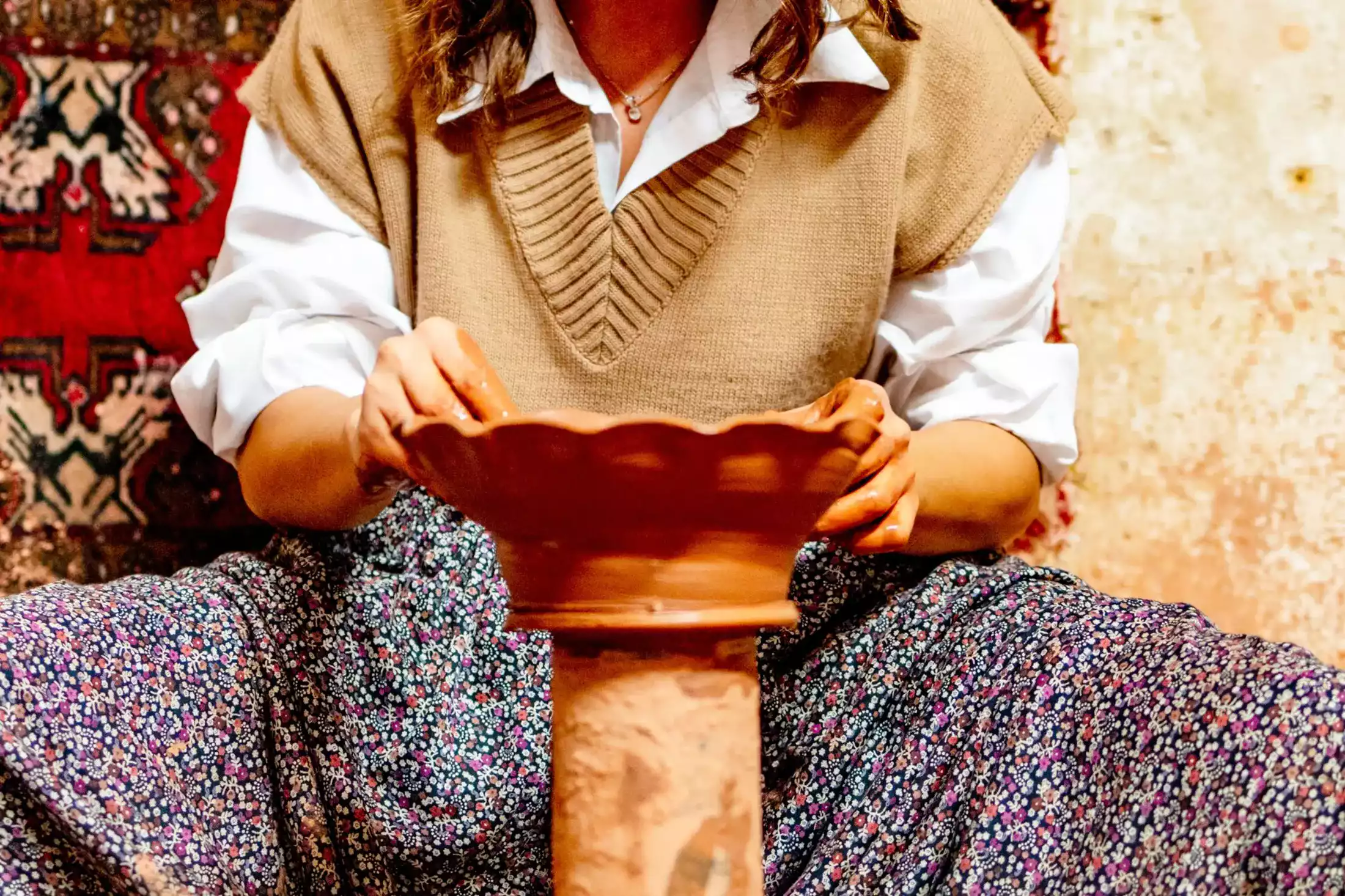
Hand Throwing
Hand throwing is a foundational technique in Moroccan pottery where artisans shape clay on a spinning pottery wheel. The pottery wheel allows potters to form symmetrical and rounded vessels with a smooth surface, which are later fired in a kiln. This practice requires a high degree of skill and coordination, as the clay must be centered and shaped uniformly by hand.
Engraving and Carving
After the initial forming on the wheel, Moroccan pottery often undergoes a meticulous process of engraving and carving. Artisans use various tools to engrave intricate patterns and motifs into the leather-hard clay. Carving can also involve removing clay to create relief designs or adding texture to the piece’s surface.
Painting and Glazing
The final decorative stage involves painting and glazing. Artisans hand-paint the earthenware with natural dyes, often using vivid colors that are characteristic of Moroccan design. The pottery is then coated with a transparent or tinted glaze that, once fired, renders the surface glossy and protects the painted designs. The glaze also plays a functional role, making the pottery more durable and waterproof. This process includes a world-renowned technique known as Zellige, a form of mosaic art that is an emblematic decorative element in Moroccan architecture.
Iconic Motifs and Patterns
Geometric Designs
Moroccan ceramics are often distinguished by their geometric patterns, a testament to the Islamic influence where the use of figural representations is discouraged. These patterns range from simple shapes to complex mathematical tessellations. The precision of these designs reflects the meticulous skills passed down through generations of artisans.
Floral and Organic Themes
In addition to the striking geometric patterns, Moroccan pottery also features floral and organic themes. These motifs are inspired by the local flora and nature, incorporating the likeness of flowers, leaves, and vines. The artisans’ ability to create fluid representations of nature showcases their adaptability and range in ceramic artistry.
Symbolic Significance
Each pattern intricately painted on Moroccan pottery carries its own symbolic significance. For instance, certain symbols may be intended to ward off evil, while others represent fertility or good fortune. The stories and meanings behind these symbols are deeply entwined with Moroccan folklore and add a layer of depth to the appreciation of these historical ceramics.
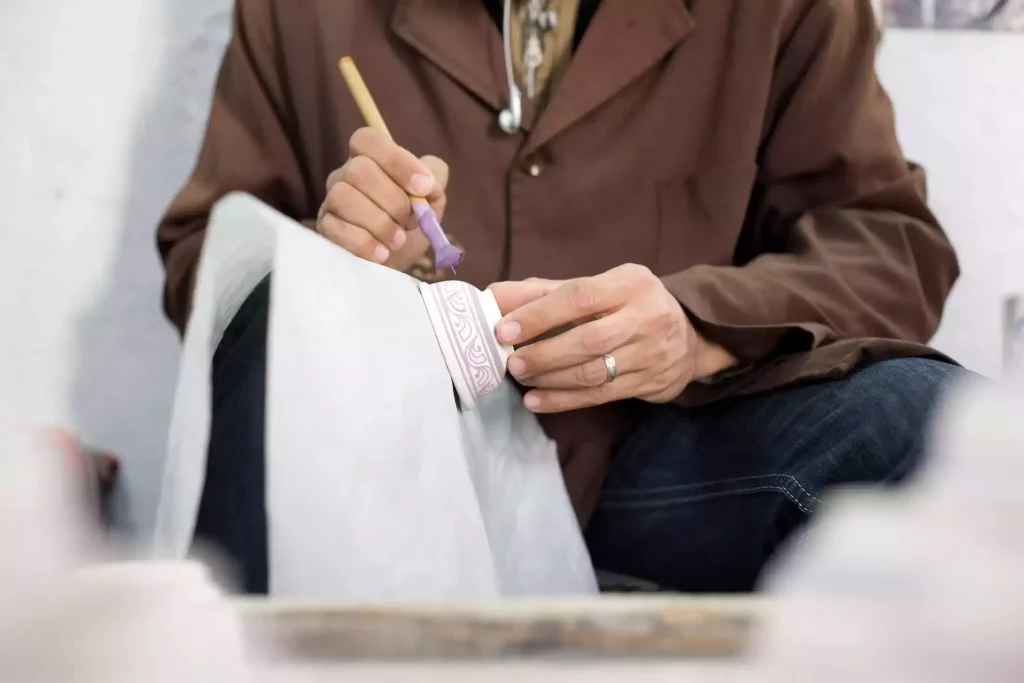
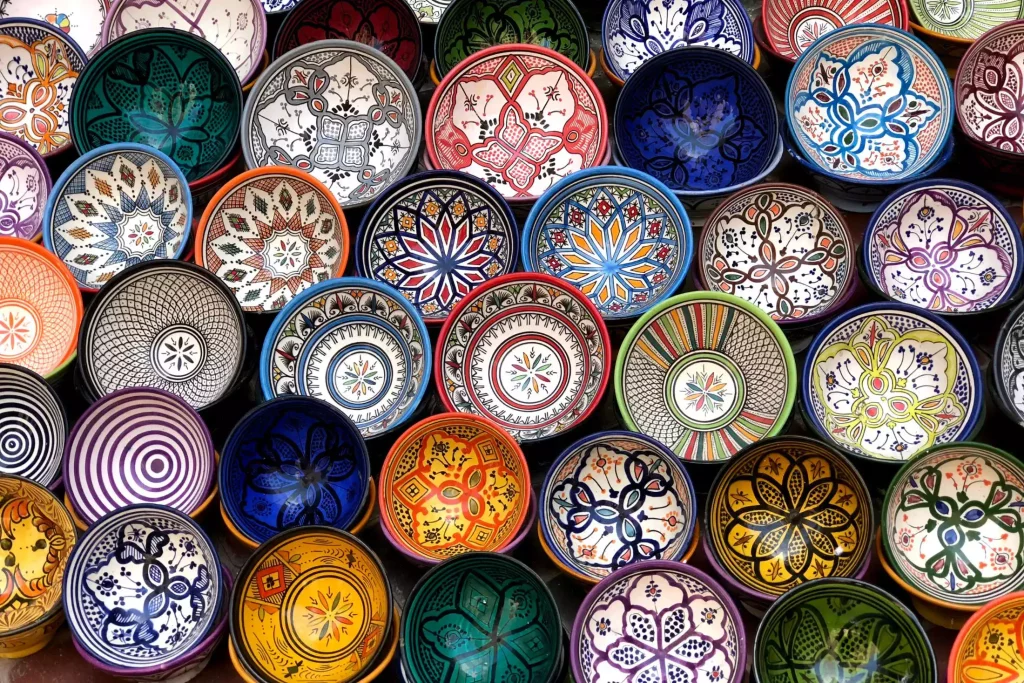
Ceramic Artisans and Workshops
Moroccan master craftsmen are renowned for their intricate designs and quality workmanship. Each piece of pottery reflects the cultural heritage of its region. For example, the Fes Pottery and Ceramics Workshop is known for its vibrant colors and complex geometric patterns, a signature of Fes ceramic artistry.
Becoming a skilled artisan in Morocco typically involves a rigorous apprenticeship. Young learners work closely with masters, often in small-scale, family-run workshops. This hands-on experience ensures the transfer of centuries-old techniques, such as those practiced in Tamegroute noted for their distinctive green glaze.
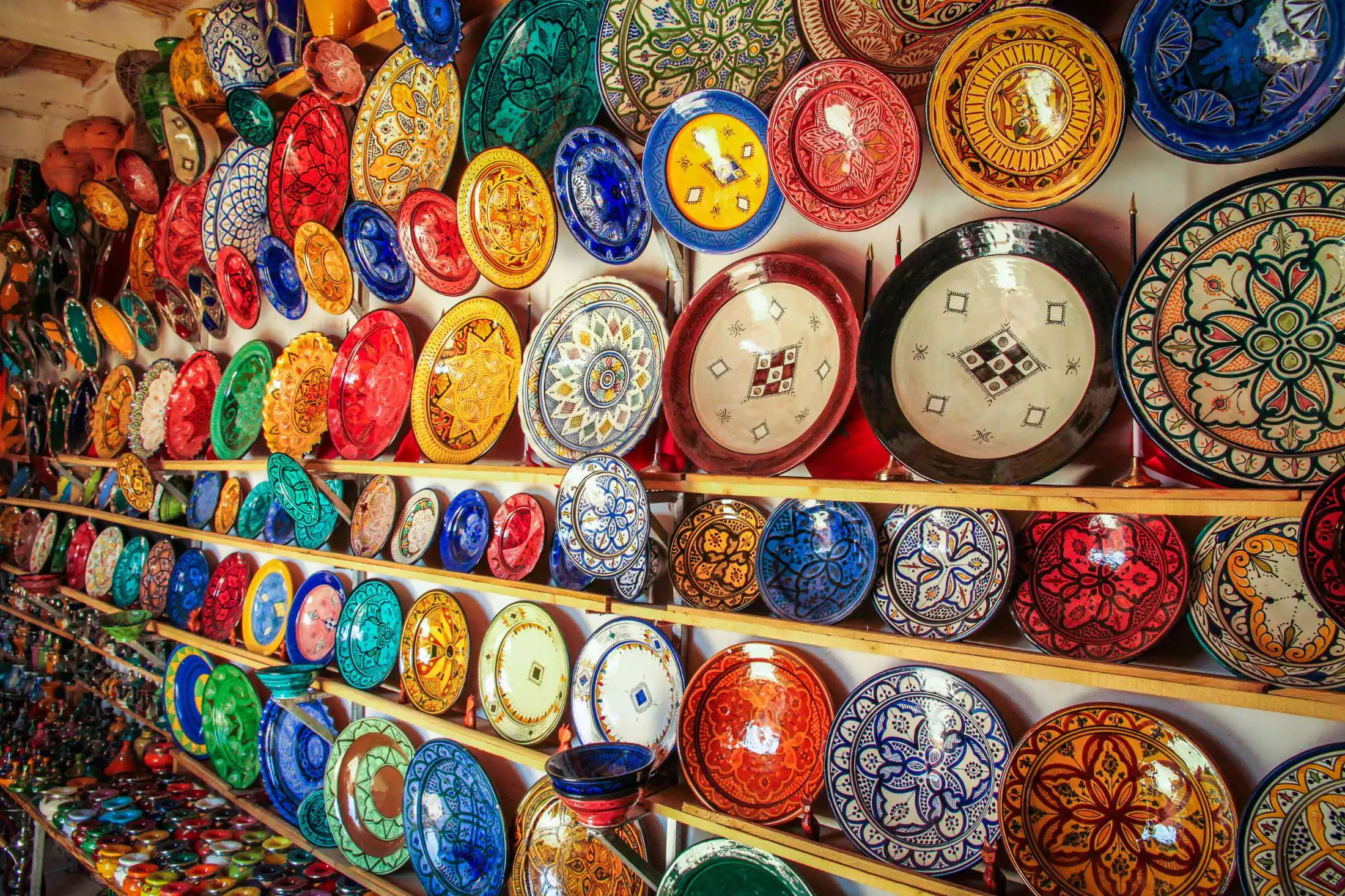
Contemporary Workshops
Modern workshops in Morocco embrace the fusion of traditional methods with new designs and approaches. They maintain the rich legacy of Moroccan ceramics while innovating to meet contemporary demands. Workshops like Atelier Said, continue to flourish by adapting to the evolving market while staying true to the ancestral roots of Moroccan pottery.
Preservation and Restoration
The meticulous preservation and restoration of Moroccan pottery is crucial to maintain the artisanal legacy and cultural history of Morocco. These practices ensure that both contemporary and antique Moroccan Pottery endure for future appreciation and study.
Conservation Techniques
Conservation of Moroccan pottery involves various techniques to arrest deterioration and restore items to a state close to their original condition. Professionals in the field prioritize methods that are:
- Reversible: Should future restoration work be needed, current conservation efforts can be undone without harm to the piece.
- Non-invasive: The approach minimally impacts the pottery’s structure and aesthetic.
For example, cracks in pottery may be filled using a color-matched filler, allowing the pieces to be displayed or used with reduced risk of further damage. Knowledge of materials and their long-term behavior is essential in selecting the right conservation approach for each unique item.
Museum Collections
Museums play a pivotal role in the preservation of Moroccan pottery by:
- Documenting: Each piece’s history and condition are thoroughly recorded.
- Storing: Items are kept in climate-controlled environments to prevent degradation.
Museum collections often include extensive inventories of pottery, ranging from everyday items to rare and valuable pieces. These institutions facilitate important research and contribute to the understanding of the techniques and materials used in Moroccan pottery through the ages.
Pottery in Moroccan Daily Life
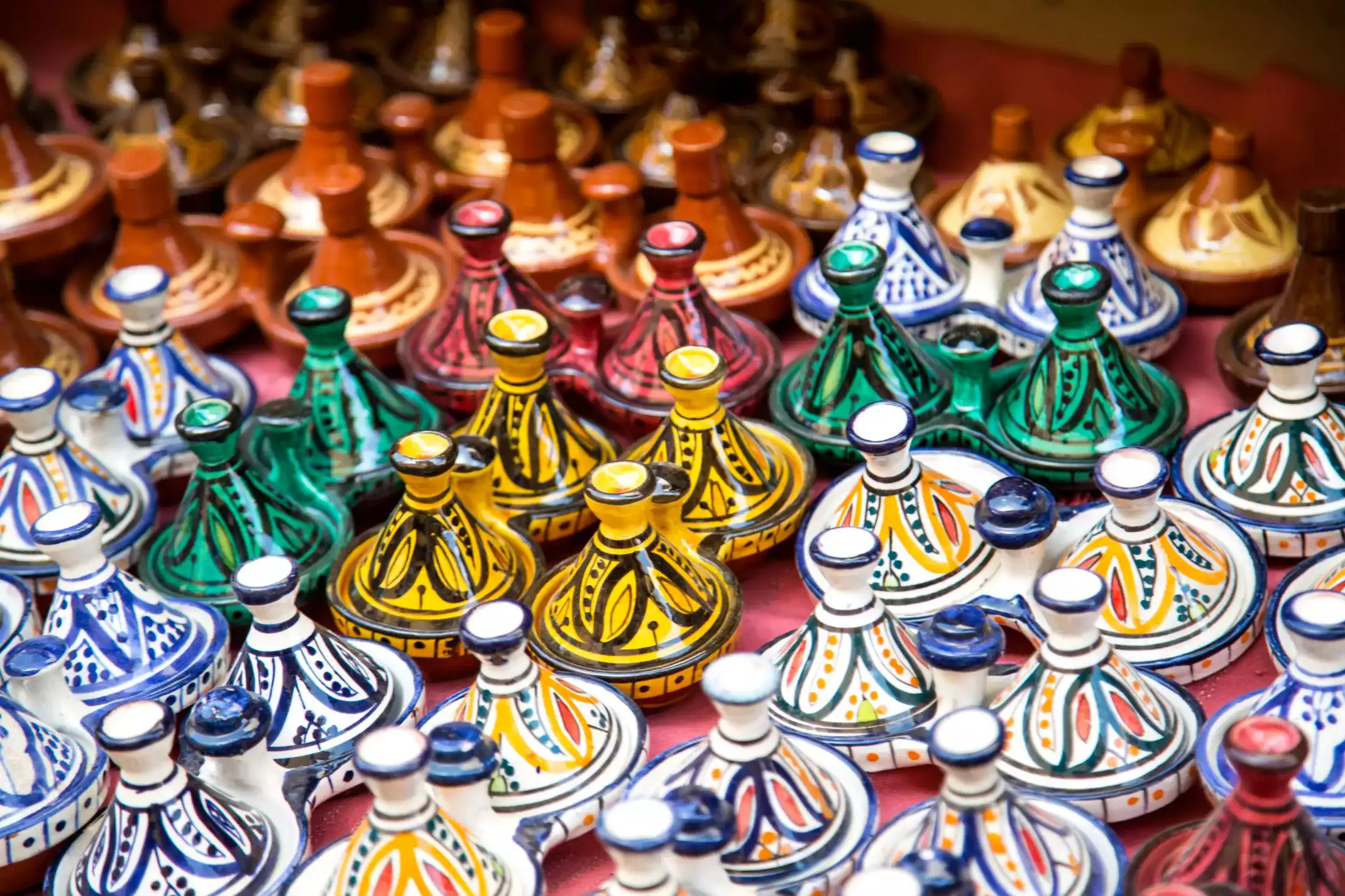
Cultural Significance
In Morocco, pottery serves both functional and decorative purposes. Households use various ceramic pieces daily, ranging from tagines for cooking traditional dishes to ornate vases enhancing home aesthetics. Artisans in Fez are known for their skilled craftsmanship, with pottery often acting as a symbol of hospitality and warmth in Moroccan homes.
Symbolism in Moroccan Culture
Each piece of Moroccan pottery is laden with meaning. Motifs used in the designs often have deep roots in Islamic art and are considered expressions of spirituality and aesthetics. The colors and patterns represent different aspects of Moroccan life—blue for the Mediterranean, green for Islam, and complex geometrics signifying the infinite. The intentional use of symbolism is a key component of the craft, making each piece a narrative of the country’s diverse cultural heritage.
Collecting Moroccan Pottery
Collecting Moroccan Pottery offers a unique opportunity to own a piece of rich cultural history. Enthusiasts should focus on authenticity and market trends to make informed decisions.
Identifying Authentic Pieces
Authentic Moroccan pottery is distinguished by its intricate designs and the quality of craftsmanship. Collectors often look for characteristics such as:
- Material: Traditional Moroccan pottery is typically made from local clays.
- Designs: Patterns can include geometric shapes, floral motifs, and calligraphy, often hand-painted with vivid colors.
- Signatures: Some pieces may bear the signature or mark of the artisan or the region where it was created.
Market and Value Trends
The value of Moroccan pottery is influenced by various factors:
- Age: Antique Moroccan Pottery, especially pieces that are several decades old, can command higher prices.
- Condition: Items without chips, cracks, or significant wear are more desirable.
- Rarity: Unique designs or pieces from renowned artists or regions known for pottery may be more sought after.
Use in Interior Design
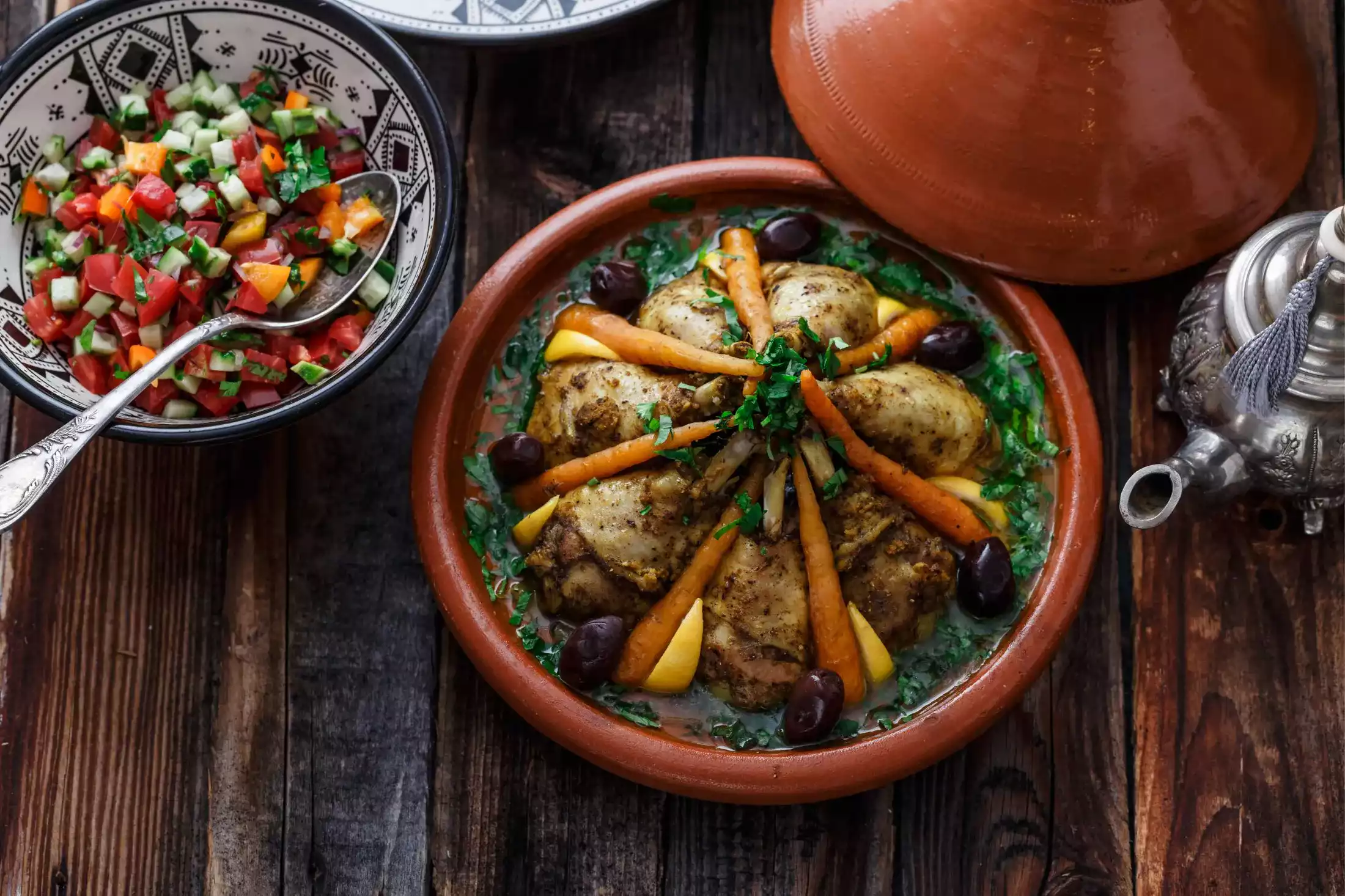
Moroccan pottery introduces a rustic charm into interior spaces, especially through items like urns, pitchers, and tagines. These pieces often feature earth tones and natural glazes, making them harmonious with a rustic decor theme. Designers may place large Moroccan pots in corners or use them as centerpieces on dining tables to enhance the rustic feel.
In modern homes, Moroccan pottery is used not only as decorative accents but also as focal points that bring a sense of worldly sophistication. Designers integrate Moroccan pottery by using:
- Wall Hangings: Miniature plates and platters displayed on walls.
- Functional Decor: Bowls and containers that serve both aesthetic and practical purposes.
Strategically positioned Moroccan pottery complements modern furniture and can harmonize with minimalist aesthetics by introducing vibrant yet controlled splashes of color and pattern.
Design of Story Rabat Hotel
As we celebrate the artisanal beauty and rich history of Moroccan pottery, with its vibrant colours and intricate designs, it becomes a metaphor for the unique experience offered at Story Rabat. The hotel’s architecture and design deeply echo the same attention to detail and cultural richness that is inherent in these traditional crafts. From the elegantly designed spaces that blend contemporary chic with Moroccan motifs, to the serene gardens that offer a peaceful oasis in the city, Story Rabat encapsulates the spirit of Moroccan heritage. Guests at Story Rabat are treated to a luxurious stay where every detail is curated to reflect the beauty and sophistication of Moroccan artistry, making their visit not just a stay, but a narrative of culture and refinement.
Frequently Asked Questions
Traditional Moroccan pottery, known for its vibrant colors and ornate designs, reflects a rich cultural heritage. Below are some common questions that provide insight into this traditional craft.
What are the distinctive characteristics of traditional Moroccan pottery?
Traditional Moroccan pottery is recognized for its vibrant colors, intricate patterns, and the skillful use of local clay and glazes. Each handcrafted piece tells a story through its unique artistry and craftsmanship.
How can one identify authentic Moroccan pottery?
Authentic Moroccan pottery can be identified by its hand-painted designs, the feel of the clay, and the quality of craftsmanship. Signs of being handmade, such as slight imperfections, can also indicate authenticity.
What are the historical origins of pottery making in Morocco?
Pottery making in Morocco has a long history, dating back centuries to Berber and Muslim influences, which have shaped the techniques and styles found in Moroccan pottery today.
What are some common patterns and motifs found in Moroccan pottery designs?
Moroccan pottery is adorned with a variety of traditional patterns and motifs, including geometric designs, floral patterns, and symbolic emblems such as the “star of David.”
How does the pottery from different regions within Morocco vary?
Pottery from different regions in Morocco, such as Fez, Safi, and Marrakech, exhibits distinct stylistic differences, influenced by local traditions, resources, and historical development.
What are the key techniques employed by Moroccan artisans in pottery creation?
Moroccan artisans employ key techniques such as wild clay extraction, hand-throwing on the wheel, intricate hand-painting, and glazing and firing, to create the unique pottery that Morocco is celebrated for.
In conclusion, Moroccan pottery is a vivid tapestry of tradition and artistry, marrying ancient craftsmanship with modern sensibilities. Each piece is not only utilitarian but also a profound expression of Moroccan heritage, reflecting the country’s rich history and diverse cultural influences. As these ceramics continue to be cherished in homes and museums alike, they stand as enduring symbols of Moroccan identity and craftsmanship, showcasing an art form that beautifully encapsulates the essence of its people and their artistic legacy.








